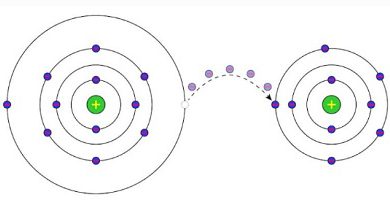What is the utility?
We explain what utility is and what is utility in accounting. In addition, what is the marginal utility, gross and net profit.
-
What is the utility?
In the field of economics , there is talk of utility to refer to the measure of consumer satisfaction when purchasing a product or service . In other words, it refers to the interest or benefit that is derived from the enjoyment of a good or a service, and that therefore determines the extent to which said good is desired (called demand ).
In this way, the greater the utility of a good or service, the greater its demand, which added to the rest of the goods and services of a market area ( supply ), will allow to reach important microeconomic conclusions, such as linked to consumer behavior .
Normally, it is considered that the usefulness of a good has high levels of subjectivity, since different consumers can evaluate it differently and therefore prefer other brands or goods, according to their tastes, their resources or their cultural conditions. This makes measuring the usefulness of a good or service accurately always a complicated task.
In the microeconomic study, however, utility is usually represented graphically as a function product of the intersection between utility (y-axis) and quantity of the good consumed (x-axis).
This function rises evenly to a point considered the point of maximum utility , which varies according to good and market segment, but from which the utility remains stable, since it is no longer consumed of the good or service: satisfaction of the consumer can no longer increase at all, as the need is fully covered.
-
Utility in accounting

In the accounting field, profit is understood as a synonym for profit or difference , it is the figure resulting from the difference between the profits obtained by a business or an economic activity, and all the expenses incurred during the process.
That is, for accounting , profit is the result of deducting production expenses from income: if the final figure is positive, it will be profits; If it is not, they will be losses.
-
Marginal utility
Marginal utility is a concept linked to the decrease in satisfaction provided by a good or service , as it is consumed in larger quantities. This is, as we said before, that the increase in satisfaction provided by consumption increases to a certain extent, from which it decreases: that is the saturation point or point of maximum utility.
According to this, the marginal utility is distinguished from the total in that while the latter increases linearly, that is, it increases because the consumer buys more goods, the marginal utility, directly linked to the satisfaction provided, increases to a certain extent and then decreases if still consuming .
Let’s give an example: a child eats candies at a party, taking them from a container in which there are many. The first candy gives a utility of 1 in both lines, the second of 2 and so on to the point of saturation (suppose 5). Then, while the total profit continues to increase to 6, the marginal utility will remain at 5, and with the following candy it will decrease to 4, even though the total profit increases to 7.
-
Gross and net profit

Gross profit and net profit are accounting concepts, which differ in specific details of their calculation. The first refers to the difference between the total cash sales of an item or a group of them in a given time, and the total cost of its production and distribution during the same period.
In contrast, net income refers to the resulting profit after accounting for non-operational expenses and revenues , such as taxes or legal reserve. This utility is, after all, the one that is effectively distributed to the company’s partners, that is, the profit.





